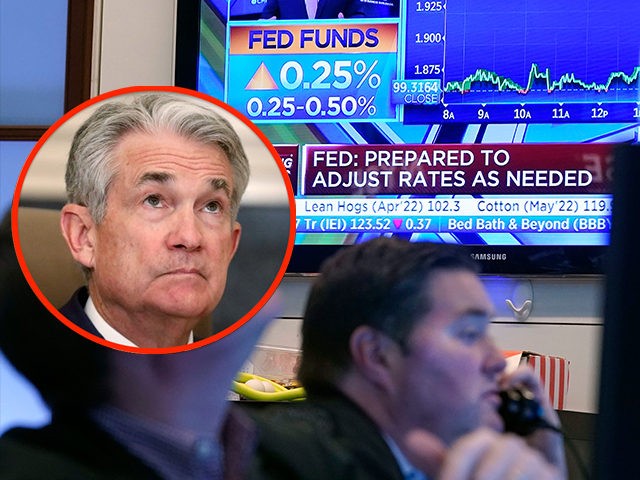The wave of euphoria that washed over the stock market on Wednesday following the long-awaited rate hike should probably be taken as a warning sign.
Instead of taking away the proverbial punch bowl, Fed Chairman Jerome Powell appeared to have poured a bit more hooch into the grog. If markets were initially wary that the Fed might throttle growth in its efforts to stem inflation, Powell’s press conference dispelled those fears and sent stocks storming the heavens.
The economic projections now show that Fed officials expect to hike one-quarter of a point at each of the remaining six meetings of the Federal Open Market Committee (FOMC) this year. That would bring the rate target up to a range of 1.75 to two percent by the end of this year. That is four more hikes than the Fed had penciled in in December, an extraordinary change of pace for an institution that spent most of last year insisting that inflation was only due to transitory factors.
But how much has really changed over at the FOMC? Although they no longer call inflation transitory, the projections hint that Fed officials still think inflation will mostly fade away on its own. This year’s inflation is supposed to come in at 4.7 percent, revised up from 2.6 percent in December’s projections, and is then expected to fall to 2.7 percent next year, up from 2.3 percent in the December figures. So even though the current year’s projection is much higher, next year’s is up only slightly. The Fed’s confidence in its ability to bring inflation down appears to be unshaken despite its massive failure to predict the strength of inflation over the past 12 months.
That could set the stage for some surprises later this year. Inflation could continue to pick up steam despite the rate hikes. Or the Fed could wind up raising rates even more rapidly than expected. In either case, today’s punchbowl rally may look a bit foolhardy.
There was one corner of financial markets that did not give itself over entirely to enthusiasm. The yield on five-year Treasuries briefly peaked up above the yield on 10-year Treasuries. The inversion was short-lived; but even afterward, the yield curve remains extremely flat. There are now just 24 basis points between the two-year yield and the 10-year yield. Any further flattening is likely to spark renewed fears of a recession or even the dreaded stagflation.

COMMENTS
Please let us know if you're having issues with commenting.